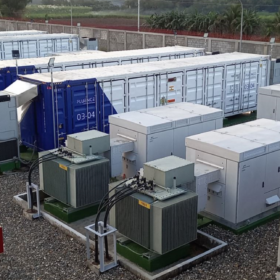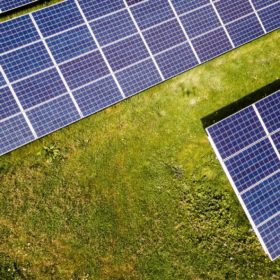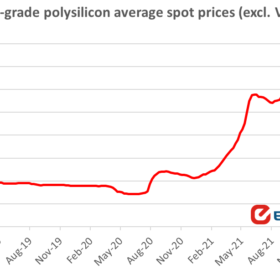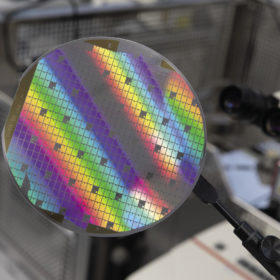Weekend read: Sodium-ion batteries go mainstream
Sodium-ion batteries are emerging as a viable alternative to lithium-ion technology. Industrial heavyweights CATL and Reliance Industries, following the acquisition of UK-based sodium-ion specialist Faradion, are bent on bringing the technology out of the lab and into mass production. Against a backdrop of soaring prices and predicted shortfalls of lithium-ion battery materials, sodium-ion chemistry has never been more tantalising.
Battery prices won’t fall until 2024: IHS Markit
The London-based analyst has published a series of clean tech predictions for the year which also highlighted the rising proportion of sub-5MW solar projects in the global market, and cheaper clean energy financing costs even as panel prices continue to rise.
Weekend read: The changing geopolitics of green hydrogen
With 90% of world economies committed to net zero targets, the disruptive nature of the energy transition is becoming clear. Climate targets require us to triple renewable energy capacity by 2030, phase out coal by 2040, end fossil fuel subsidies, and ensure support for a just transition. While hydrogen is sure to be a key technology in this energy transition, the exact role it will play is not yet clear, reports Felicia Jackson.
‘The major solar players will shift from PERC to TOPCon’
US analyst Clean Energy Associates made some notable predictions in its Q4 survey of the world solar manufacturing market, including echoing predictions made elsewhere that the new polysilicon production capacity coming online now will help arrest the spike in solar panel prices.
World’s largest electrolyser fab breaks ground in Australia
Fortescue Future Industries says the first electrolysers to be manufactured at the facility, early next year, are earmarked for use in Queensland at FFI’s planned green-hydrogen-to-ammonia project on Gibson Island.
New IPCC report shows Australia is at real risk from climate change, with impacts worsening and wide-ranging adaptation needed
Climatic trends, extreme conditions and sea level rise are already hitting many of Australia’s ecosystems, industries and cities hard. As climate change intensifies, we are now seeing cascading and compounding impacts and risks, including where extreme events coincide. These are placing even greater pressure on our ability to respond.
Airbus plans flight test with direct combustion engine fuelled by hydrogen
Elsewhere, Chinese researchers have synthesised ultrafine Pd100-xCux nanodot-modified TiO2 photocatalysts that display optimised energy barrier for interfacial hydrogen desertion, which reportedly exhibits excellent H2-evolution activity and stability, and Mitsubishi Heavy Industries has presented its plans to establish the Takasago Hydrogen Park, calling it the world’s first centre for validation of hydrogen-related technologies, from hydrogen production to power generation.
Aussie researchers find best BIPV envelope design alternatives
Scientists in Australia have developed an optimisation framework for building-integrated photovoltaics that allows the selection of design variables according to user preferences. Their model considers PV-related features such as tilt angle, window-to-wall ratio (WWR), PV placement, and PV product type, as well as objective functions and constraints such as the net present value and the payback period.
Polysilicon price fluctuations expected to continue until late 2023
Two industry experts have provided analyses of the current polysilicon price scenario in a chat with pv magazine and both agreed that polysilicon demand is still growing faster than supply. The price may decrease starting from the second quarter and reach more reasonable levels by the end of the year.
Weekend read: Silicon carbide’s second coming
Silicon carbide (SiC) has promised inverter makers higher power density, higher efficiency, and a total bill of materials that comes in closer to its more established rival in silicon. Has SiC finally arrived? Tristan Rayner spoke to the people at the forefront of the wider-bandgap material to find out the back story and what’s next.















